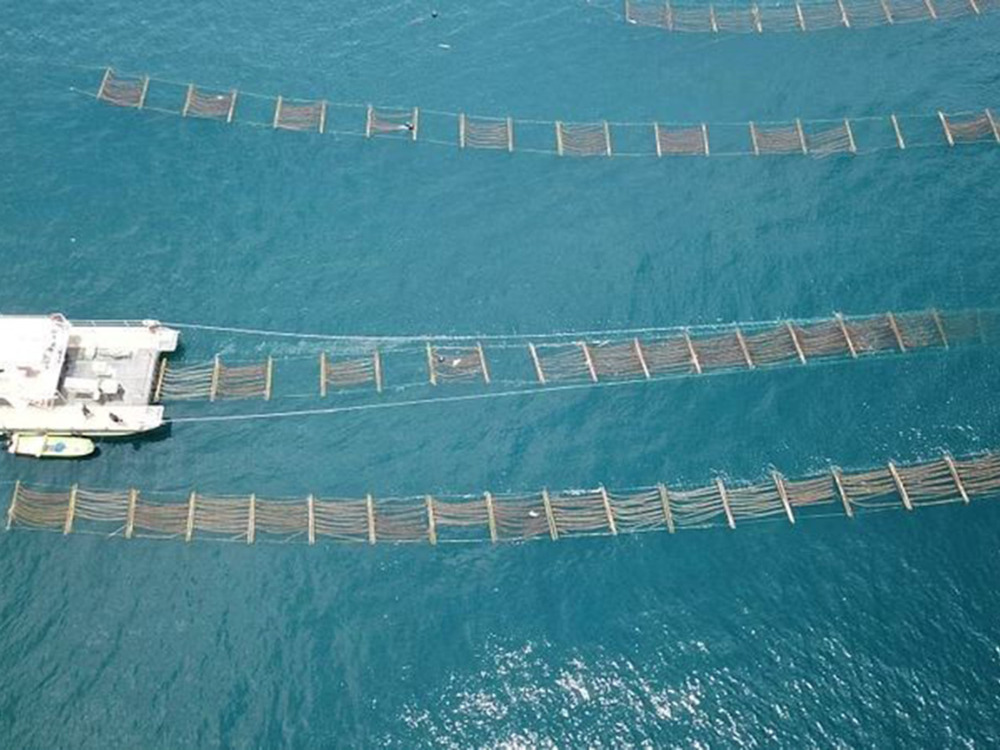The interior of Central Asia has been identified as a key route for some of the earliest hominin migrations across Asia in a new study led by Dr. Emma Finestone, Assistant Curator of Human Origins at the Cleveland Museum of Natural History and Research Affiliate of the Max Planck Institute for the Science of Human History.
The study’s findings indicate that the steppe, semi-arid and desert zones of Central Asia were once favorable environments for hominins and their dispersal into Eurasia.
An interdisciplinary team of scholars from institutions that span four continents set out to expand the limited knowledge of early hominin activity in the Central Asian lowlands. The team included Dr. Paul Breeze and Professor Nick Drake from Kings College London, Professor Sebastian Breitenbach from Northumbria University Newcastle, Professor Farhod Maksudov from the Uzbekistan Academy of the Sciences, and Professor Michael Petraglia from Griffith University in Queensland, Australia.
“Central Asia connects several zones that played important roles in hominin dispersals out of Africa and through Asia” Dr. Finestone said. “Yet we know comparatively little about the early occupation of Central Asia. Most of the archaeological material is not dated and detailed paleoclimate records are scarce, making it difficult to understand early hominin dispersal and occupation dynamics in that region.”
The team compiled and analyzed paleoclimatic and archaeological data from Pleistocene (ca. 2.58 million years ago to 11,700 years ago) Central Asia. This included building a dataset of Paleolithic stone tools and analyzing a mineral deposit that formed in a cave (a stalagmite) in southern Uzbekistan. Tool-making and tool modification are key to human ability to migrate to new environments and to overcome environmental challenges. Ancient hominins moved their tools with them as they dispersed. The researchers studied the location of stone tools and the environmental conditions that were reflected in the stalagmite as it grew at the end of the Marine Isotope Stage 11 (a warm period between glacials MIS 12 and MIS 10) around 400,000 years ago.
Dr. Maksudov from the Uzbekistan Academy of the Sciences said relatively little is known about the region’s earliest toolmakers because the majority of Lower Paleolithic (the earliest subdivision of Paleolithic stone tools) occurrences in Central Asia lack reliable context for dating and environmental reconstruction.
“Despite the potential importance of Central Asia to early dispersals, our knowledge of the Lower Paleolithic across this vast and diverse landscape has been limited.”
“We compiled data on Paleolithic findings from across Central Asia, creating a dataset of 132 Paleolithic sites — the largest dataset of its kind” said Professor Petraglia, a senior author on the study. “This allowed us to consider the distribution of these sites in the context of a new high-resolution speleothem-based multi-proxy record of hydrological changes in southern Uzbekistan from the Middle Pleistocene.”
“Cave deposits are incredible archives of environmental conditions at the time of their growth. Using geochemical data from stalagmites we gain insights into seasonal to millennial-scale changes in moisture availability and the climatic dynamics that governed rain- and snowfall. Our work suggests that the local and regional conditions did not follow simple long-term trends but were quite variable.” said Professor Breitenbach, who lead the stalagmite-based analysis.
“We argue that Central Asia was a favorable habitat for Paleolithic toolmakers when warm interglacial phases coincided with periods when the Caspian Sea was experiencing consistently high water levels, resulting in greater moisture availability and more temperate conditions in otherwise arid regions” said Dr. Finestone. “The patterning of stone tool assemblages also supports this.”
During periodic warmer and wetter intervals, the local environment of arid Central Asia could have been a favorable habitat and was frequented by Lower Paleolithic toolmakers producing bifaces (stone tools that have been worked on both sides).
“Interdisciplinary work that bridges archaeology with paleoclimate models are becoming increasingly necessary for understanding human origins” said Dr. Finestone. “In the future, the databases generated in this study will continue to allow us to ask questions about the context of hominin dispersals.”
Story Source:
Materials provided by Cleveland Museum of Natural History. Note: Content may be edited for style and length.
Source link
Author






